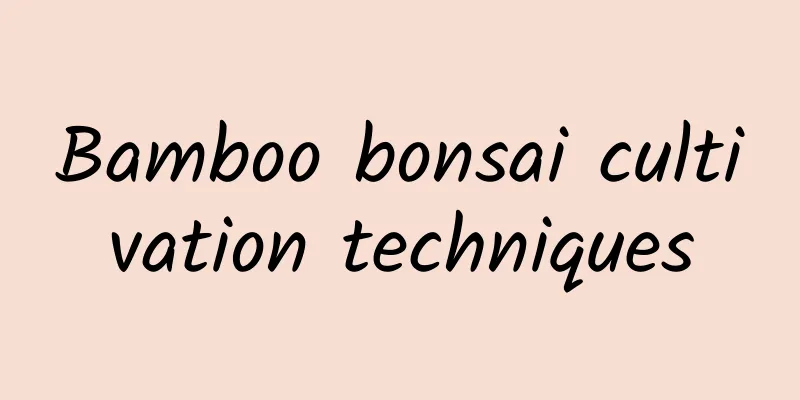Bamboo bonsai cultivation techniques

How to make bamboo bonsaiTo make bamboo bonsai, you need to choose shorter bamboos. Loose, fertile, acidic soil is best used for cultivation. It should be potted in March-April or August-September. Before potting, put a layer of expanded clay at the bottom of the pot, which should be breathable and water-permeable. Add potting soil about 4 cm below the mouth of the pot and place it in a place with diffused light for maintenance. It will germinate after one month and can be pruned in June-July. Bamboo bonsai cultivation techniquesTo cultivate bamboo bonsai, you must first determine the use of container clay pots, select well-growing seedlings, the soil should be loose and fertile, slightly acidic black soil, with sufficient light conditions and stable temperature. The bamboo bonsai's demand for water depends on seasonal changes. Fertilize once a month and pay attention to insect prevention. Things to note when growing bamboo bonsaiBamboo bonsai can be kept at home, but attention should be paid to ventilation. If it is placed in a stuffy environment for a long time, it is easy to breed diseases and pests. It can be placed near a window with plenty of sunlight, and windows should be opened for ventilation more often. Bamboo bonsai is not very cold-resistant, so it is best to keep the temperature above 10 degrees in winter. 1. Use soil It is best to use acidic or neutral soil for bamboo bonsai, and contain some granular stones to increase the air permeability of the bamboo roots. It can be mixed with peat, leaf mold, perlite, expanded clay, river sand, garden soil, etc. 2. Pruning It is best to prune bamboo bonsai in June and July, and prune the leaves and branches that are too dense. For bonsai that require special shapes, the branches next to them should be trimmed to facilitate the sprouting of new branches. 3. Repotting The best time to repot bamboo bonsai is in spring, when the climate is mild, the temperature begins to rise, and the plants grow vigorously. Repotting at this time will cause less damage to the plants and can also be more conducive to their later recovery. 4. Watering After the bamboo bonsai is potted, it must be watered thoroughly for the first time. The soil in the pot should be kept moist afterwards. Do not water it too much. The leaves should be sprayed with water frequently from potting to the survival period, an average of once every 1-2 days in summer, and less watering in winter, but the soil in the pot must be kept moist. |
<<: How to water Christmas cactus
Recommend
How to prepare succulent soil? How to prepare succulent soil
Succulent soil preparation requirements Succulent...
How to breed money string
1. Soil When choosing soil, coarse sand mixed wit...
How to water Clivia in winter?
Most of my friends are familiar with Clivia, and ...
How to prune hibiscus and what to pay attention to
Hibiscus pruning time Hibiscus should be pruned t...
When is the right time to sow hibiscus? Season and method
Hibiscus sowing time Hibiscus belongs to the Malv...
What is the function of tiger skin plant? Can it remove formaldehyde?
1. Can it remove formaldehyde? Tiger Piranha is a...
Why don't you plant azaleas at home?
1. Bring bad luck to the family Azaleas will affe...
Does Jiulixiang like the sun?
Murraya paniculata Osmanthus fragrans is a sun-lo...
The Feng Shui Effect of Clivia
1. Improve career fortune Its blooming period is ...
How often should I water my spider plant?
Daily watering There is no need to pursue the sta...
How to grow beets
1. Maintenance methods 1. Temperature: Beet prefe...
How to water the transplanted crabapple in spring
1. How to water after transplanting After transpl...
How to keep seeds of Nepeta and how to plant them
How to save seeds of Nepeta When planting, select...
What does rosemary do?
1. Helps you sleep Rosemary flowers and seeds can...
When does Magnolia bloom?
1. When will it bloom? It usually blooms from Mar...









